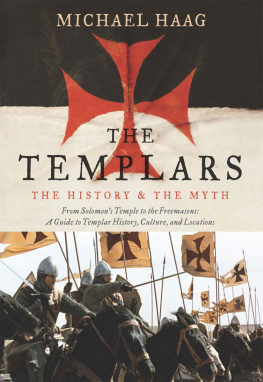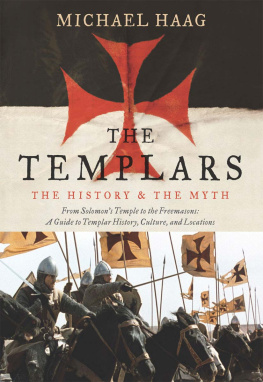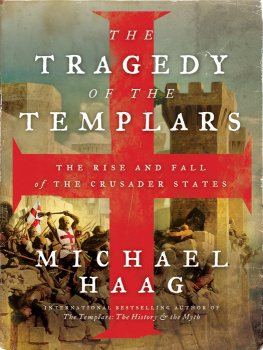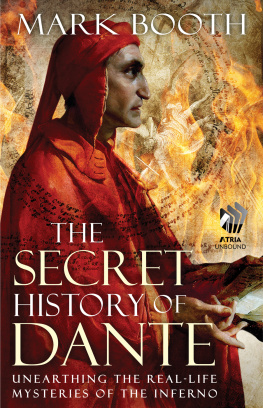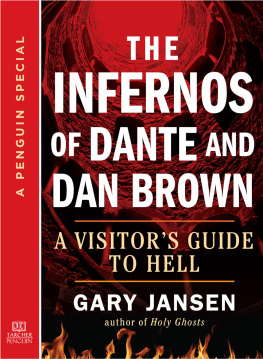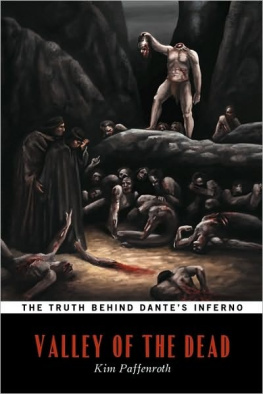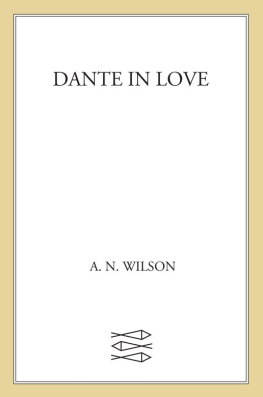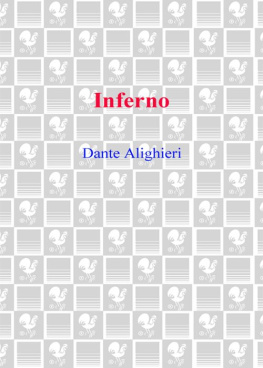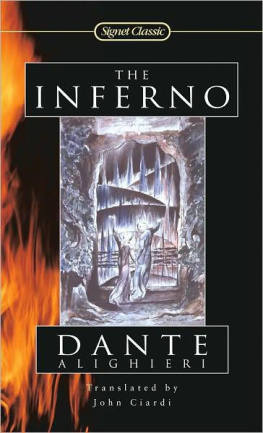INFERNO
DECODED
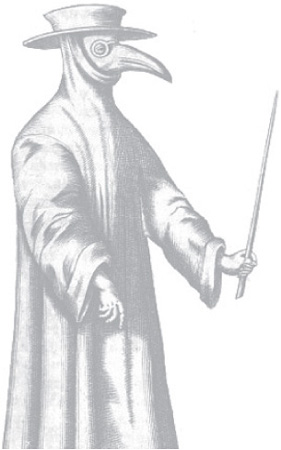
MICHAEL HAAG is a notable historian who has written for the Sunday Times, the Los Angeles Times and Vogue. His books include the bestselling Rough Guide to The Da Vinci Code, The Tragedy of the Templars, and Alexandria: City of Memory. Originally from New York City, he lives in London.
www.michaelhaag.com
INFERNO DECODED
First published in Great Britain in June 2013 by
PROFILE BOOKS LTD
3A Exmouth House
Pine Street
London EC1R 0JH
www.profilebooks.com
Paul McMahon 2013
Greg Ward 2013
All other text copyright Michael Haag 2013
The moral right of the author has been asserted.
All rights reserved. Without limiting the rights under copyright reserved above, no part of this publication may be reproduced, stored or introduced into a retrieval system, or transmitted, in any form or by any means (electronic, mechanical, photocopying, recording or otherwise), without the prior written permission of both the copyright owner and the publisher of this book.
A CIP catalogue record for this book is available from the British Library.
ISBN 978-1781251805
ePUB ISBN 9781847659989
INFERNO DECODED
Michael Haag
WITH
GREG WARD

ACKNOWLEDGEMENTS
This book has followed Dan Browns Inferno in using the William Wadsworth Longfellow translation of the Divine Comedy, though sometimes I have adapted it for clarity. Where occasionally Dan Brown has used Allen Mandelbaums modern verse translation of the Divine Comedy, published by Bantam (originally University of California Press, 1980), that has been followed here too. Also I have occasionally used the prose translation of the Divine Comedy by John D Sinclair published by Oxford University Press (1939). Quotations from Dantes Vita Nuova are from the translation by Dante Gabriel Rossetti (1874).
For his help and advice I give my thanks to Alexei Grishin.
Thanks to Greg Ward (www.gregward.info) who wrote chapters Seven, Nine and Thirteen of this book. Paul McMahon kindly gave permission to adapt and shorten the chapter on Was Malthus Right? from his book Feeding Frenzy (Profile Books, 2013) for use as Chapter Eight of this book.
Photographs: p.224 and p.233, Corbis Images; p.167 Karl Gruber; p.177 Russ London. All photographs of Florence and the Hagia Sophia were taken by Michael Haag.
The map of Florence on p.203 is taken from the Blue Guide to Florence, and has been adapted and reproduced with permission.
CONTENTS
Inferno Decoded
In the heart of Florence a mysterious figure called the Shade throws himself from the bell tower of a church. But not before announcing his gift to mankind, a modern-day version of the Black Death, which will cull the worlds human population by a third. The Shade calls his invention Inferno. The path to paradise passes directly through hell, he says. Dante taught us that.
Dan Browns Inferno is a tumultuous thriller, full of rapid twists and turns as Robert Langdon races through the streets and churches and secret passageways of Florence, unravelling the hidden meanings of verses and symbols in Dantes Inferno and all the time following the Map of Hell, drawn by another great Florentine, Sandro Botticelli.
Inferno Decoded is an illuminating companion to Dan Browns Inferno. It looks into the novels darkest mysteries, sorting out the facts from the fiction and exploring the ancient cities that serve as its setting. Do the clues unveiled in symbology professor Robert Langdons daring quest from Florence to Venice and Istanbul overlap with history? What codes and symbols did Dante employ in the Divine Comedy and which secret religious, philosophical, and scientific themes are hidden within his work? What lies behind Botticellis Mappa delInferno?
Inferno Decoded also debates the big questions posed by Dan Brown. In a world that will soon be home to ten billion people, are we truly facing mass starvation, perpetual war and the collapse of human society? Does the Shades plan to thin the human herd make some sort of twisted sense? Does the future lie with the Transhumanist aim of genetically transforming ourselves into posthumans? And what lessons can be learned from the great humanists of the Renaissance themselves?
INTRODUCTION
Dan Browns Inferno
The darkest places in hell are reserved for those who maintain their neutrality in times of moral crisis.
Epigraph to Dan Browns Inferno
At the heart of Dan Browns Inferno lies a moral argument. According to one of the books central characters, the world is overpopulated. Nothing effective has been done, or can be done using conventional means, to prevent the population increasing until Earth can no longer sustain such numbers and human society collapses under the strain.
This character, however, has a plan: a massive cull of the human population. After all, he remarks, the Black Death of 1348 amounted to much the same thing, and had wonderful results; the immediate increase in available land, and the redistribution of wealth into fewer hands, provided the stimulus that gave rise to the Renaissance. Faced with the choice between the collapse of civilised society on the one hand, and its rebirth on the other, would it really be such a bad thing if a modern version of the Black Death were set loose today?
This same character, first introduced as the Shade, sees images of that hellish world of overpopulation in Dante Alighieris Inferno. In Dantes vision, the sufferings and anguish of the condemned are intensified by their sheer numbers: I neer would have believed / That ever Death so many had undone. According to the Shade: To do nothing is to welcome Dantes hell cramped and starving, weltering in Sin. Reminders of the plague leap out at Browns perennial hero, Robert Langdon, in almost every street as he makes his way through Florence, seeking clues about the hidden doomsday device. My God, Langdon thought, as he noticed a sign reading La peste near (the Black Death), its everywhere I turn!
That sign was on Ghibertis famous bronze doors, on the east side of the Baptistery, which had been commissioned as an offering to God in 1401 in the hope that Florence would be spared future epidemics. When Michelangelo saw the completed doors, he called them the Gates of Paradise. According to the Shade, however, The path to paradise passes directly through hell. Dante taught us that.
In this introductory overview, well run through the essential plot, characters, themes and ideas of Dan Browns Inferno. All are explored at greater length in the chapters that follow.
INTRODUCING THE SHADE
Florence lies in darkness, the Apennine mountains to the east shutting out the early rays of dawn. A desperate ghost-like figure runs along the banks of the River Arno and through the dolent city, through the eternal woe, his pursuers gaining ground, their footsteps growing louder.
This is how the Prologue of Dan Browns Inferno begins in the middle of things. Not only does Brown swiftly take us into his own plot, but he also draws us into the Inferno of Dante.
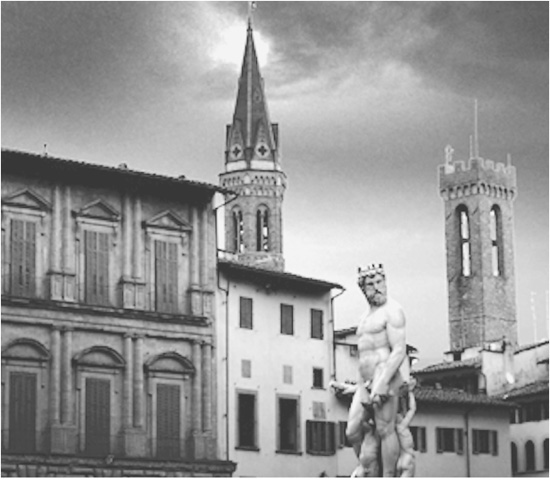
Next page

